October 25, 2016 Auroras
Grand Rapids, MN
The corotating interaction region (CIR) ahead of a high speed stream of solar wind was starting to affect Earth's magnetosphere, and Bz was going south. Again, I had plans earlier in the evening-- a very long board meeting for a local lake homeowner's association. The meeting ran 3 1/2 hours, and when I got out, the skies had been completely dark for some time. I drove home, and when I got out of my car, I looked in the sky and immediately saw the green band a bit higher up than I expected. Time to grab the camera and shoot from the driveway.
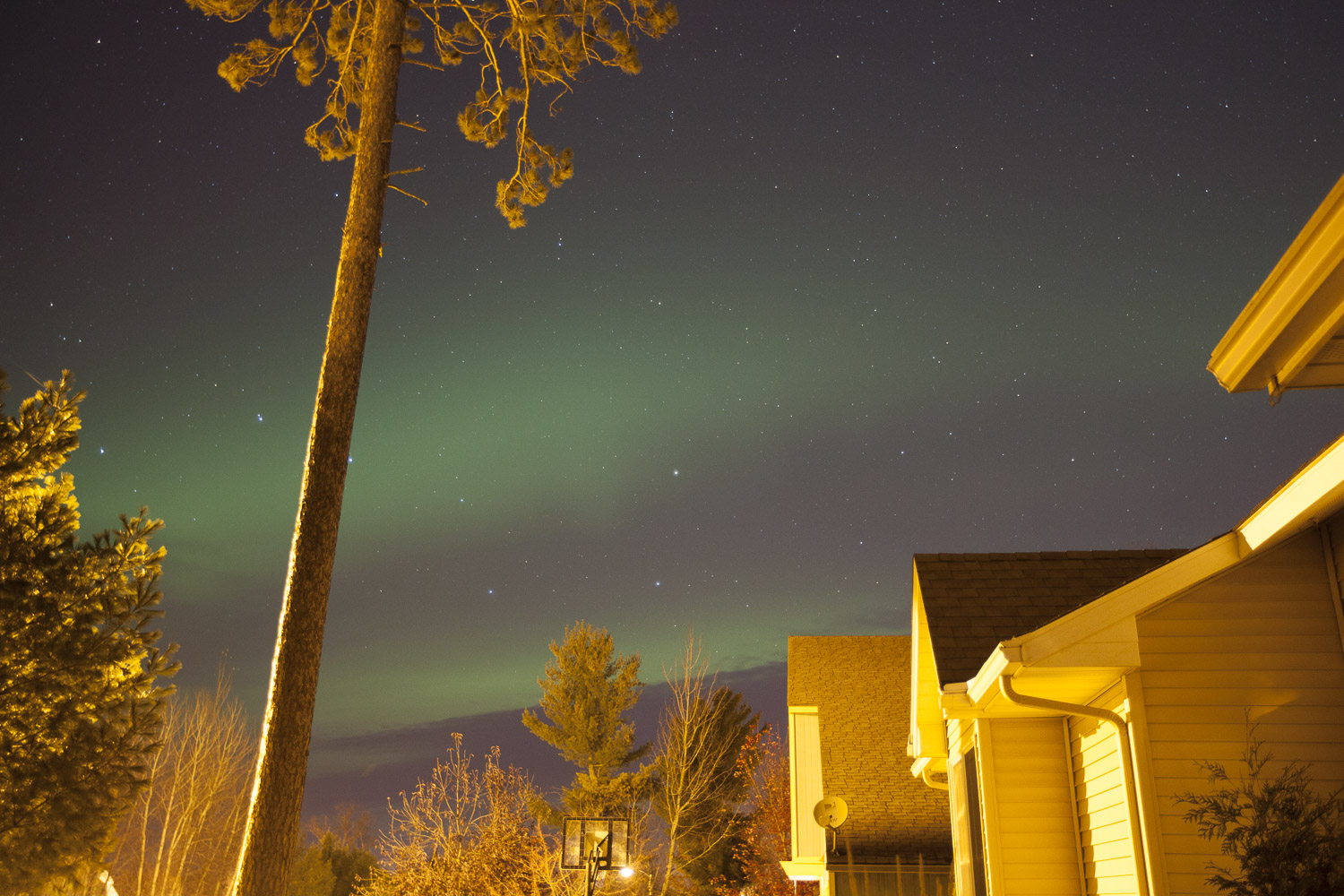 |
| The initial green band at home. |
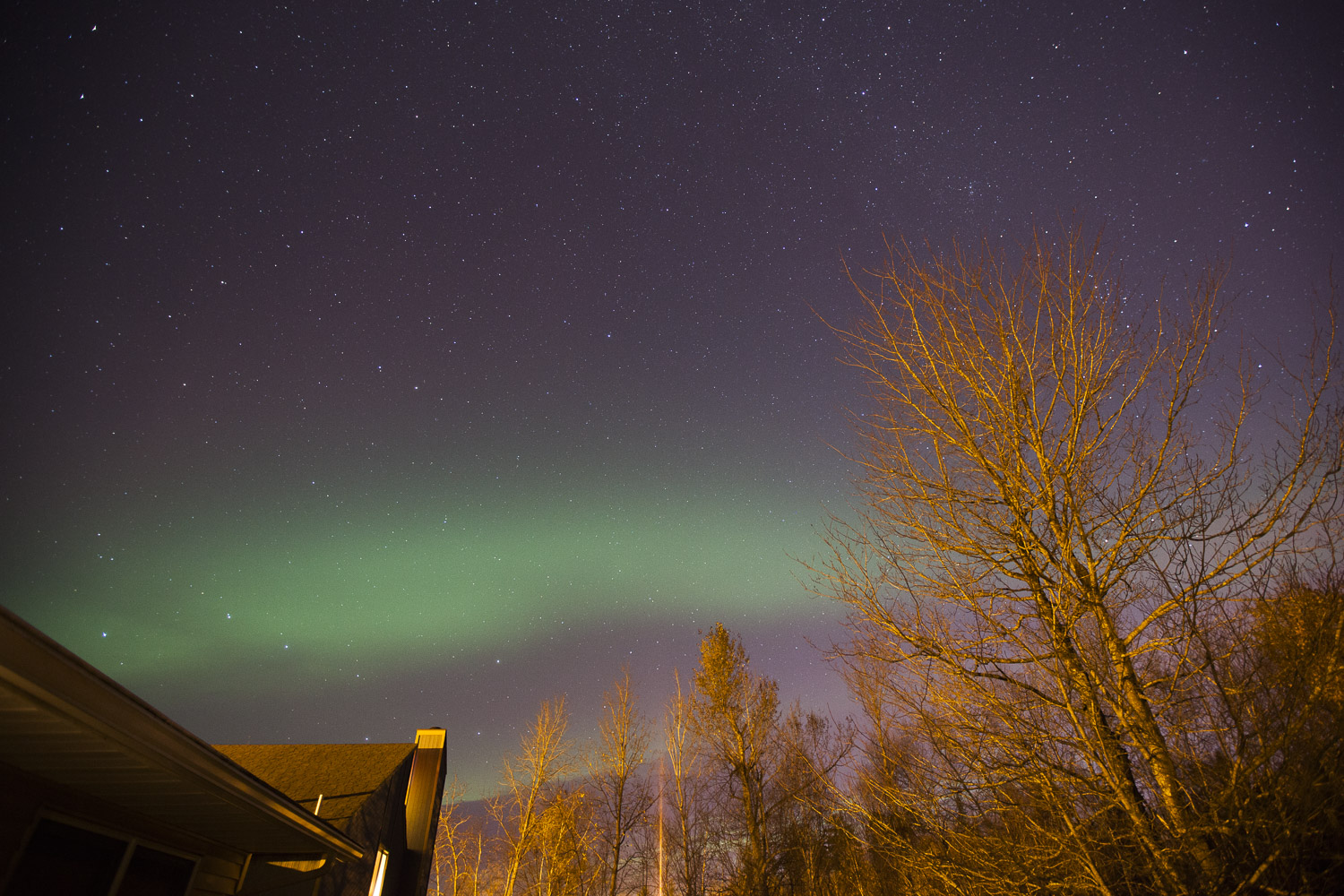 |
| A shot from the back yard. |
After shooting a little from home and grabbing a bite to eat, I headed to my "green" shooting location on the river. By the time I go there, the green band that was high in the sky dissipated, leaving the primary green band on the horizon. This did not impress too much, so I grabbed a few stills and headed back home for some sleep
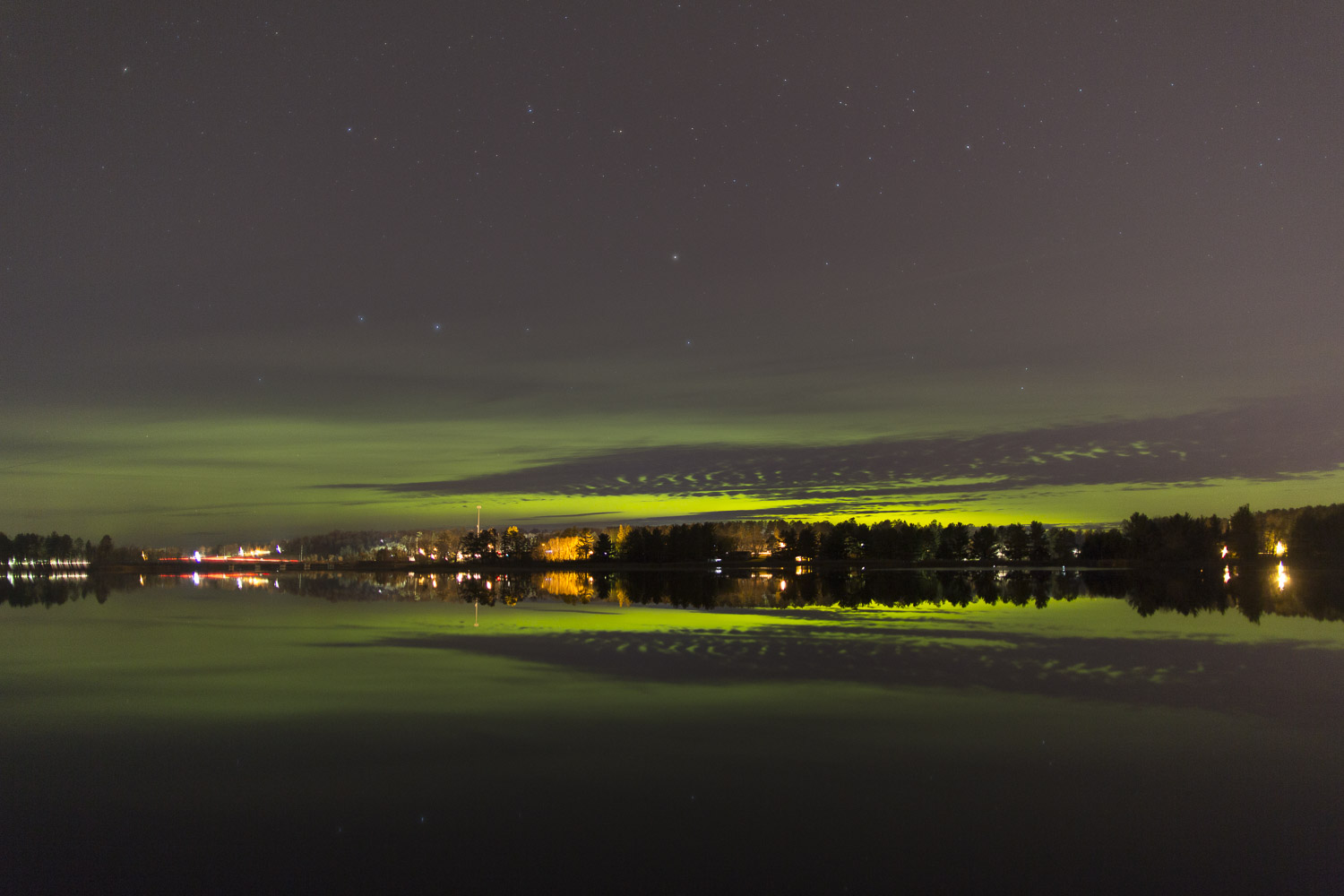 |
| Looking out over the Mississippi River. |
Because I was in bed before 11:00, I woke up around 2:00 or 3:00 am. This allowed me to check conditions again. I walked out on the deck to take a shot of what I could see. It wasn't the most spectacular display I had ever seen, so I headed back to bed and got a good night's sleep for work in the morning.
The coronal hole was a very large one and would affect Earth for several days, bringing the Kp index as high as 7 for a couple hours. For Grand Rapids, the skies clouded up, and we missed several nights of auroras.
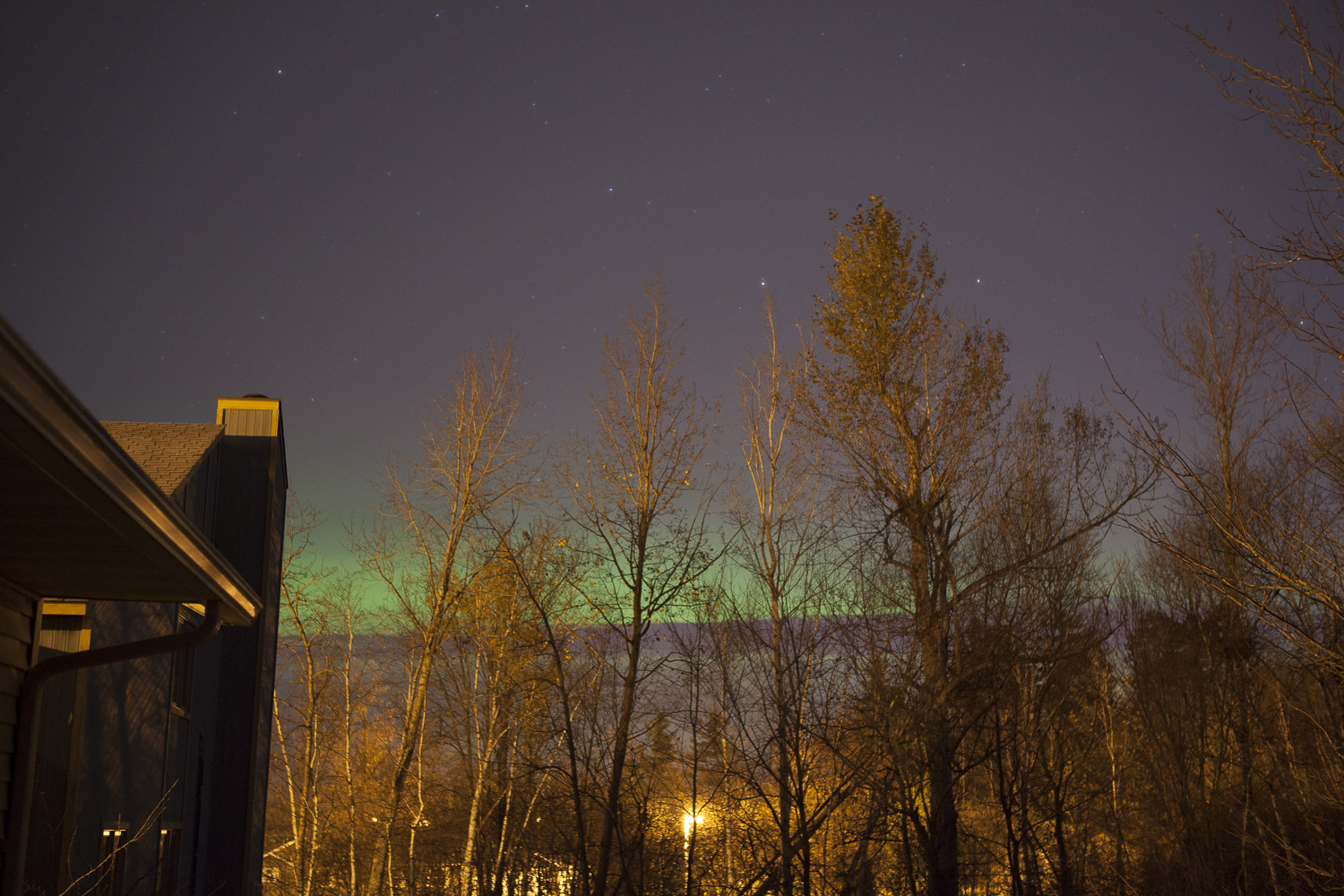 |
| An early morning shot from the deck. |
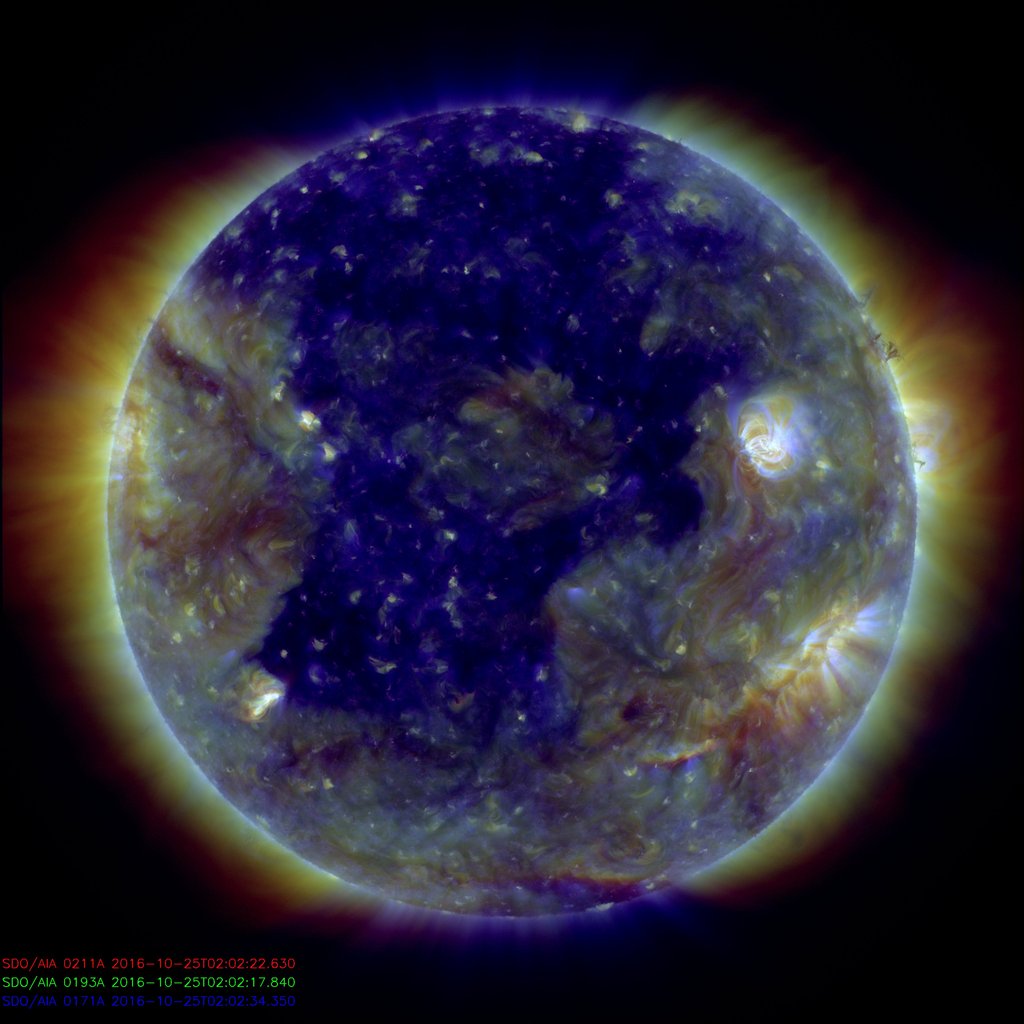 |
| A composite image from the Solar Dynamics Observatory showing the coronal hole (that giant dark spot in the image). |
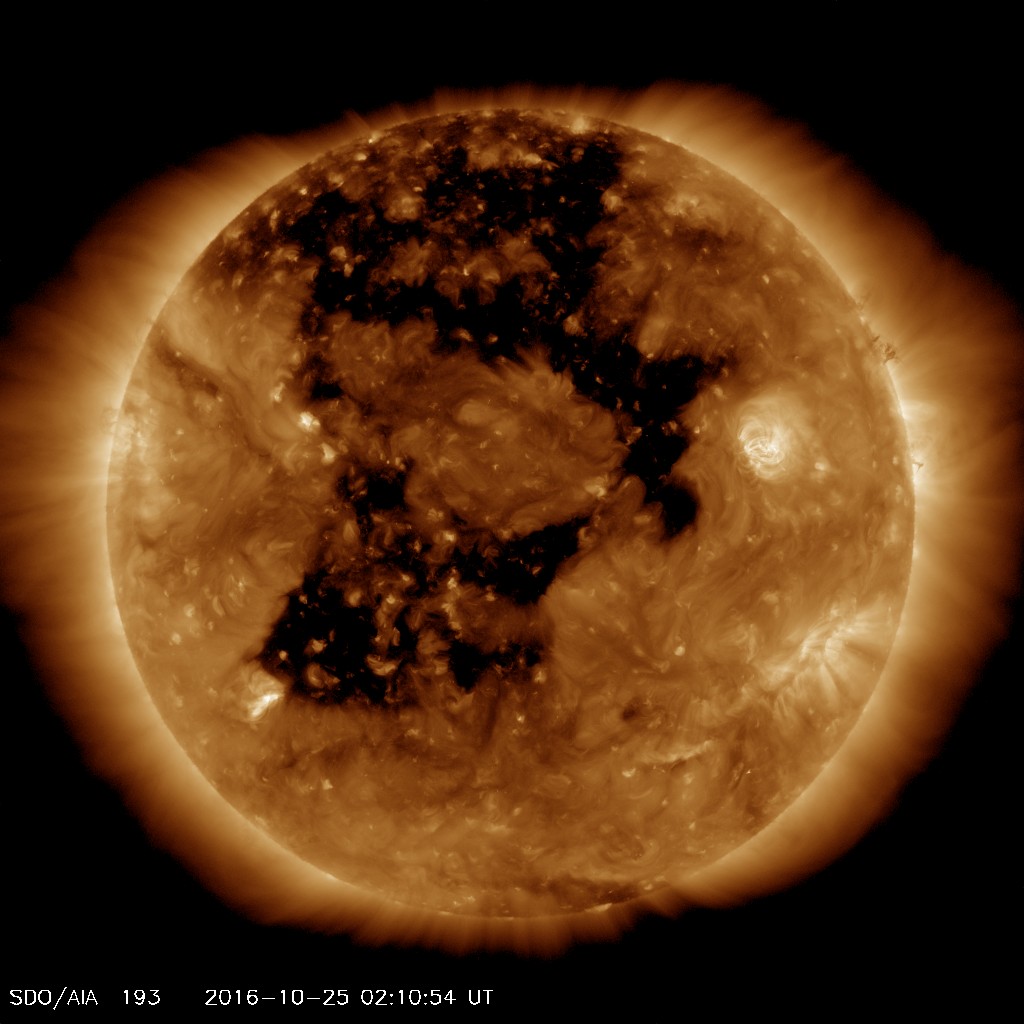 |
| A 193 Angstrom image of the coronal hole. |
Back to Auroras | Home

